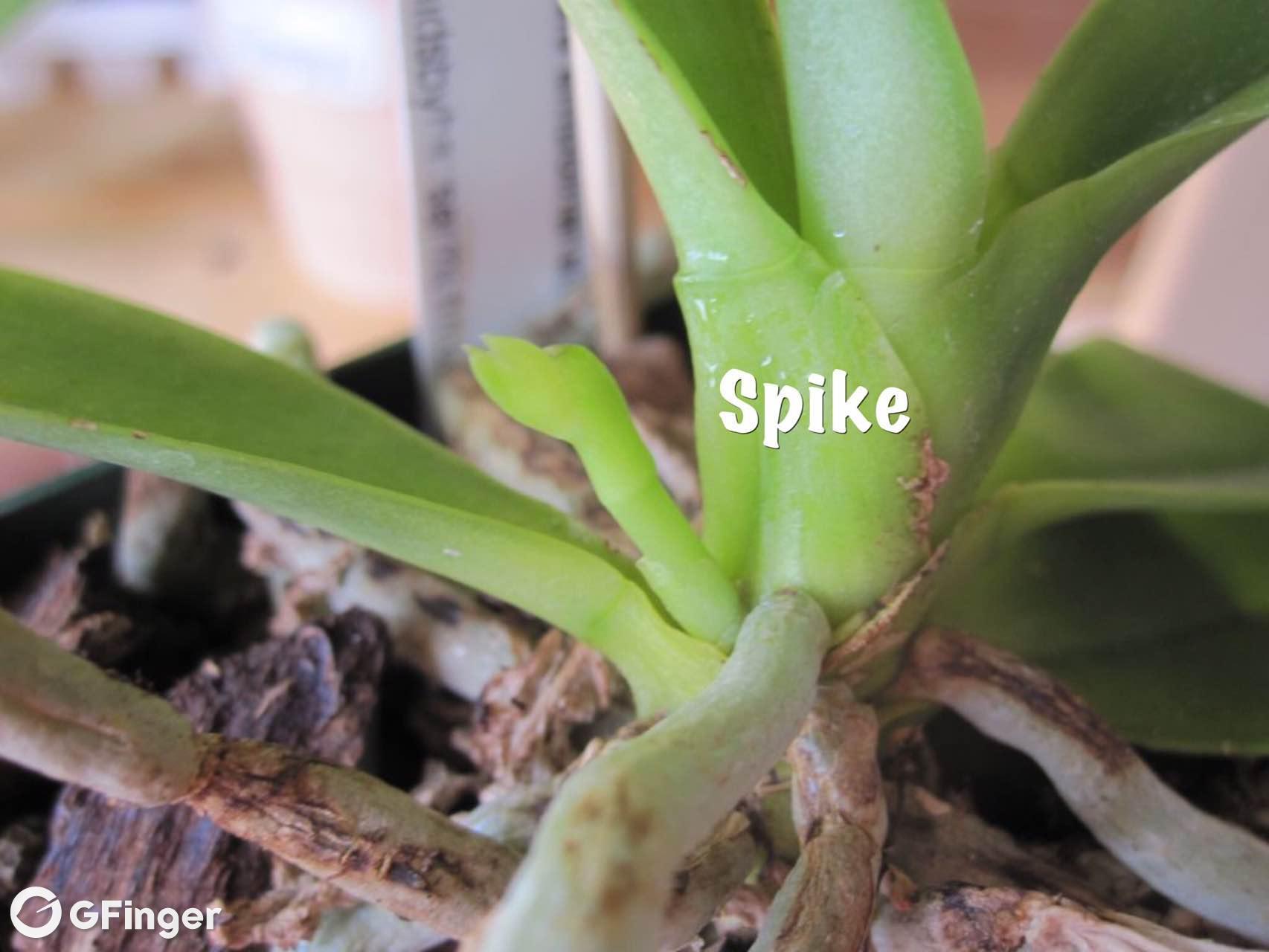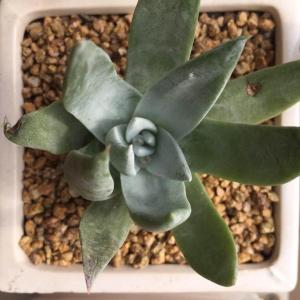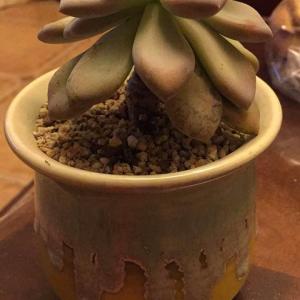文章
stone
2016年12月29日

#suncculents #winter Succulents are such a popular and easy to care for plant these days.However, a freeze thaw / climate and snow generally is not a succulents best friend.
1. Watering
Pour water into the top of the succulent container until it drains out the bottom. Water the succulents deeply but less often in the winter. Let the soil dry out completely before watering again.
2. Sunlight
Succulents survive with indirect light during the winter.Place the dormant succulent in an area with at least three to four hours of bright light.Usually try to do this a couple of days a week during winter.
3. Temperature
When the temperature outdoors starts to cool below 60 degrees Fahrenheit start tapering off with watering.Bring your succulents inside when outside temps hit 40 degrees. Keep the temperature of the room the succulents are in around 50 to 55 degrees Fahrenheit during the winter. Many succulents such as aeoniums and living stones do not tolerate colder temperatures.
4. Check frequently for bugs
I've heard through other gardeners that 3 parts rubbing alcohol and 1 part water can be wiped onto any succulent that may develop aphids over winter.
You can use a cotton ball or a soft paper towel to apply it and make sure to check underneath the leaves. Also make sure to separate that plant from others until the aphids are completely gone.
5. Feeding
Feed the succulents one last time at the end of summer. Succulents only need diluted fertilizer while they are actively growing. Stop feeding when the plants stop growing for the year and go dormant, which occurs when the temperatures drop and the light level falls. Too much fertilizer causes succulents to develop soft leaves, which are prone to rot.

1. Watering
Pour water into the top of the succulent container until it drains out the bottom. Water the succulents deeply but less often in the winter. Let the soil dry out completely before watering again.

2. Sunlight
Succulents survive with indirect light during the winter.Place the dormant succulent in an area with at least three to four hours of bright light.Usually try to do this a couple of days a week during winter.

3. Temperature
When the temperature outdoors starts to cool below 60 degrees Fahrenheit start tapering off with watering.Bring your succulents inside when outside temps hit 40 degrees. Keep the temperature of the room the succulents are in around 50 to 55 degrees Fahrenheit during the winter. Many succulents such as aeoniums and living stones do not tolerate colder temperatures.

4. Check frequently for bugs
I've heard through other gardeners that 3 parts rubbing alcohol and 1 part water can be wiped onto any succulent that may develop aphids over winter.
You can use a cotton ball or a soft paper towel to apply it and make sure to check underneath the leaves. Also make sure to separate that plant from others until the aphids are completely gone.

5. Feeding
Feed the succulents one last time at the end of summer. Succulents only need diluted fertilizer while they are actively growing. Stop feeding when the plants stop growing for the year and go dormant, which occurs when the temperatures drop and the light level falls. Too much fertilizer causes succulents to develop soft leaves, which are prone to rot.
7
2
文章
Rainbow
2016年12月27日

How to Recognize Orchid Roots and Orchid Spikes?
1.If you look very closely, you will see a “mitten shape” indicative of spikes.
2.The new root is growing down, the new spike is growing up!








1.If you look very closely, you will see a “mitten shape” indicative of spikes.
2.The new root is growing down, the new spike is growing up!









3
0
文章
Rainbow
2016年12月27日

#phalenopsis-orchids #moth-Orchids-care
1. Find the Perfect Location
Finding an area that receives bright, indirect light. A moderately bright windowsill or similar spot would be perfect. Phals grow beautifully in an east window and can be grown in a south or west window if protected by a sheer curtain.
PS:The color of the phal’s leaves is a good light indicator – if they are olive green then the plant is getting enough light, if they are darker it means it is not getting enough light.
2. Temperature
Phals will thrive best in a room with a daytime temperature of around 75°F and night temperature of 65°F .95°F is the maximum temperature recommendation. Although occasional deviations will not harm your plant, this can be a problem when it is in bud – chilly temperatures may cause the plant to stop budding.
3. Watering
The amount of water that your orchid needs depends mostly on the potting medium. Phals are usually grown in bark or moss, so if your orchid is potted in bark water once a week , if it is potted in moss, water when the top feels dry. Do not over-water.There are other factors that will determine your watering routine, like light and heat. For example, in the summer months the plant will need more frequent watering while in winter it will need less. Another thing to have in mind is that it is best to water your phal in the morning. Here is how the process should go: place the plant in the sink and use tepid water, let the water run through the plant for a minute or so and be sure to let the plant drain completely.
4. Humidity
Humidity is very important for moth orchids. They ideally require a humidity level of 55-75%. So how to increase moisture around your orchids? Simple place a shallow tray filled with pebbles and water under your plant. Make sure the pot does not sit in water as this will rot the roots.
5. Feeding
First rule about feeding your phal –do not over do it! Good results may be obtained by using any balanced orchid fertilizer. Feed your plant weekly. Once a month, use clear water to flush any accumulated salts from the potting mix.
6. Flowering
One of the things that makes Phals so popular is surely their blooming period which can last from 2 to 6 months. They are one of the longest blooming orchids. Phalaenopsis have also been known to bloom 2 to 3 times per year once they have reached a mature size. When the blooming period is over, don’t throw away your orchid because with just a little care it will flower again.
7. Care After Blooming
When all the pretty flowers fall out of your phal’s stem there are three options to consider leave the flower spike intact, cut it back to a node, or remove it entirely. If you leave it intact, it may produce new blooms from the tips. If you cut it back it may produce a new flower spike where you made the cut. If the existing stem starts to turn brown or yellow,hen remove it entirely. You can also trick your plant into bloom by placing it a cooler area where the night temperature is slightly lower, about 55°F. Once a bloom spike appears, return your orchid to its normal setting.
8. Repotting
As we said Phals are long term bloomers and will be in bloom for most of the year. When the flowers fall off, it is a good chance to repot your plant. It will be the best if this happens in spring or fall as the temperatures are mild and you will avoid unnecessary shock for the plant. Make sure you use a top quality orchid mix for repotting. Water sparingly until new roots are well established because a good root system ensures blooming.
9.Bud Blast
Bud blast is the main reason why some people think Phals are hard to maintain. Yes, it does happen – buds dry up and drop off the plants without ever opening. But there is always a reason for this and if you make sure you have everything right, you can avoid this. Some of the factors for bud blast are high room temperature, very low light, too much watering, too much fertilizer , using softened water etc. Your orchids love clean air! Exposure to smoke from an open fire, cigars, cigarettes, paint fumes and even old fruit (which exudes ethylene) can cause wilting and bud drop.
1. Find the Perfect Location
Finding an area that receives bright, indirect light. A moderately bright windowsill or similar spot would be perfect. Phals grow beautifully in an east window and can be grown in a south or west window if protected by a sheer curtain.
PS:The color of the phal’s leaves is a good light indicator – if they are olive green then the plant is getting enough light, if they are darker it means it is not getting enough light.

2. Temperature
Phals will thrive best in a room with a daytime temperature of around 75°F and night temperature of 65°F .95°F is the maximum temperature recommendation. Although occasional deviations will not harm your plant, this can be a problem when it is in bud – chilly temperatures may cause the plant to stop budding.

3. Watering
The amount of water that your orchid needs depends mostly on the potting medium. Phals are usually grown in bark or moss, so if your orchid is potted in bark water once a week , if it is potted in moss, water when the top feels dry. Do not over-water.There are other factors that will determine your watering routine, like light and heat. For example, in the summer months the plant will need more frequent watering while in winter it will need less. Another thing to have in mind is that it is best to water your phal in the morning. Here is how the process should go: place the plant in the sink and use tepid water, let the water run through the plant for a minute or so and be sure to let the plant drain completely.

4. Humidity
Humidity is very important for moth orchids. They ideally require a humidity level of 55-75%. So how to increase moisture around your orchids? Simple place a shallow tray filled with pebbles and water under your plant. Make sure the pot does not sit in water as this will rot the roots.

5. Feeding
First rule about feeding your phal –do not over do it! Good results may be obtained by using any balanced orchid fertilizer. Feed your plant weekly. Once a month, use clear water to flush any accumulated salts from the potting mix.

6. Flowering
One of the things that makes Phals so popular is surely their blooming period which can last from 2 to 6 months. They are one of the longest blooming orchids. Phalaenopsis have also been known to bloom 2 to 3 times per year once they have reached a mature size. When the blooming period is over, don’t throw away your orchid because with just a little care it will flower again.

7. Care After Blooming
When all the pretty flowers fall out of your phal’s stem there are three options to consider leave the flower spike intact, cut it back to a node, or remove it entirely. If you leave it intact, it may produce new blooms from the tips. If you cut it back it may produce a new flower spike where you made the cut. If the existing stem starts to turn brown or yellow,hen remove it entirely. You can also trick your plant into bloom by placing it a cooler area where the night temperature is slightly lower, about 55°F. Once a bloom spike appears, return your orchid to its normal setting.

8. Repotting
As we said Phals are long term bloomers and will be in bloom for most of the year. When the flowers fall off, it is a good chance to repot your plant. It will be the best if this happens in spring or fall as the temperatures are mild and you will avoid unnecessary shock for the plant. Make sure you use a top quality orchid mix for repotting. Water sparingly until new roots are well established because a good root system ensures blooming.

9.Bud Blast
Bud blast is the main reason why some people think Phals are hard to maintain. Yes, it does happen – buds dry up and drop off the plants without ever opening. But there is always a reason for this and if you make sure you have everything right, you can avoid this. Some of the factors for bud blast are high room temperature, very low light, too much watering, too much fertilizer , using softened water etc. Your orchids love clean air! Exposure to smoke from an open fire, cigars, cigarettes, paint fumes and even old fruit (which exudes ethylene) can cause wilting and bud drop.
3
2
kensong:Very good care guide for phals. Thanks a lot.
文章
Erin
2016年12月26日

#growing-fruit How to Grow Roma Tomatoes
Roma tomatoes are not considered as heirloom tomatoes. They are determinate tomatoes that grow up to 1 m tall, suitable for containers. The period of maturation of roma tomatoes takes 75-90 days from germination to maturity.
Growing Roma tomatoes is not much different than cultivating other varieties. They may only differ in shape and size and the growing process and requirements are similar. You just have to make sure that they get enough sunlight, water and fertile soil and cared against pests and diseases.<img src="1000062744_24273_1482734611.jpg">
Requirements for Growing Roma Tomatoes
Position
It requires a lot of sunlight at least 6 hours is essential. If you are living in tropics protect the plant from scorching afternoon sun. It is safe to say that good amount of sun is the main component of a productive and successful harvest.
Soil
The most suitable soil for the cultivation of this variety is well drained, light and loamy soil, rich in organic matters like humus and compost or aged manure.
Watering
Water your plants regularly. Growing roma tomatoes require plenty of water. In colder climates take care in watering, especially if grown in partially shaded spot. Tomato plant requires more water at the time of fruiting. Lack of water can cause split tomatoes.<img src="1000062745_24273_1482734611.jpg">
Roma Tomato Care
Fertilizer
You can fertilize the plant with liquid fish fertilizer once a week if grown in container during the growing season, moreover when plant is setting fruits. Also add balanced slow release fertilizer during planting. Application of manure or compost time to time is also recommended.
Pests and diseases
Roma tomatoes are resistant to many pests and diseases. In diseases they are commonly infected by blossom end rot and fungal diseases if foliage are kept wet. Tomato hornworms can be controlled by hand picking or using neem oil or you can try companion planting to prevent them.
Pinch Suckers
Small suckers will grow at each leaf axil. This can weaken the plant and won’t bear fruit. Pinch these out to encourage great plant growth.
Harvesting
Since it is a determinate variety, all tomatoes ripens at about the same time. Harvest roma tomato when it turns red from all sides and skin remains slightly soft.
Roma tomatoes are not considered as heirloom tomatoes. They are determinate tomatoes that grow up to 1 m tall, suitable for containers. The period of maturation of roma tomatoes takes 75-90 days from germination to maturity.
Growing Roma tomatoes is not much different than cultivating other varieties. They may only differ in shape and size and the growing process and requirements are similar. You just have to make sure that they get enough sunlight, water and fertile soil and cared against pests and diseases.<img src="1000062744_24273_1482734611.jpg">
Requirements for Growing Roma Tomatoes
Position
It requires a lot of sunlight at least 6 hours is essential. If you are living in tropics protect the plant from scorching afternoon sun. It is safe to say that good amount of sun is the main component of a productive and successful harvest.
Soil
The most suitable soil for the cultivation of this variety is well drained, light and loamy soil, rich in organic matters like humus and compost or aged manure.
Watering
Water your plants regularly. Growing roma tomatoes require plenty of water. In colder climates take care in watering, especially if grown in partially shaded spot. Tomato plant requires more water at the time of fruiting. Lack of water can cause split tomatoes.<img src="1000062745_24273_1482734611.jpg">
Roma Tomato Care
Fertilizer
You can fertilize the plant with liquid fish fertilizer once a week if grown in container during the growing season, moreover when plant is setting fruits. Also add balanced slow release fertilizer during planting. Application of manure or compost time to time is also recommended.
Pests and diseases
Roma tomatoes are resistant to many pests and diseases. In diseases they are commonly infected by blossom end rot and fungal diseases if foliage are kept wet. Tomato hornworms can be controlled by hand picking or using neem oil or you can try companion planting to prevent them.
Pinch Suckers
Small suckers will grow at each leaf axil. This can weaken the plant and won’t bear fruit. Pinch these out to encourage great plant growth.
Harvesting
Since it is a determinate variety, all tomatoes ripens at about the same time. Harvest roma tomato when it turns red from all sides and skin remains slightly soft.
3
0
lrgarden:👍
文章
Erin
2016年12月26日

#growing-fruit-tips
DON’TS
1. Don’t water from above. Doing so encourages water born pathogens and spreads disease.
2. Don’t Overcrowd. Tomato seedlings need plenty of room to grow and will be stunted if they are over crowded. The same is true for mature plants. The size of a mature tomato plant is about 3 feet in diameter, so don’t plant young plants a foot apart.
3. Don’t forget tomato cages. While a tall stake will work okay, tomato plants can get very large and will benefit from having a tomato cage around them to keep sprawling stems off the ground.
4. Don’t wait too long to stake. I place my stakes in at the time that I plant the seedlings. I won’t damage the roots if I do this and the stems will be ready to tie up as the plant grows.
5. Don’t forget that critters like tomatoes too! If you have followed my blog, you will know of my exploits with the squirrels. Nothing is worse than seeing a dozen half ripe tomatoes on the ground with a bite out of each one. See my tips for dealing with squirrels. Hint…they don’t like cayenne pepper!
6. Don’t over-fertilize. Doing so will often result in bushy tomato plants with few flowers and flowers are what makes tomatoes later.
7. Don’t go for seedlings with flowers. You may think this will give you a head start on the growing season but the opposite is the case. Go for strong root systems and healthy looking stems. The flowers will come soon enough. (The same goes for flowering plants – why buy those already in flower? Enjoy them in your garden, not at the garden center!)
8. Don’t plant too early. Tomatoes are best if the soil temperature is consistently above 50º F outside. And make sure to measure the temp down a ways into the soil. 6 inches doesn’t sound like a lot, but think of where the roots are!
9. Don’t be impatient. The sweetest tomatoes are those that grow on the vine as long as possible. Don’t be in a hurry to take them off too early. If any fall off the vine, see my tips for ripening green tomatoes.
10. Don’t panic at the end of the season. If you have plants left and a frost is threatening at season end, pull up the whole plant, tomatoes and all and hang upside down in a garage or basement. The fruit will continue to ripen.
11. Don’t store tomatoes in the fridge. Doing so will spoil the taste and take away much of the sweetness that you are looking for. See this tip for sweet tomatoes.
Sun-ripened tomatoes deliver the taste of summer in every bite all summer long. Plant just a few healthy plants and you will ensure the production of buckets of this delicious fruit.
DON’TS
1. Don’t water from above. Doing so encourages water born pathogens and spreads disease.
2. Don’t Overcrowd. Tomato seedlings need plenty of room to grow and will be stunted if they are over crowded. The same is true for mature plants. The size of a mature tomato plant is about 3 feet in diameter, so don’t plant young plants a foot apart.
3. Don’t forget tomato cages. While a tall stake will work okay, tomato plants can get very large and will benefit from having a tomato cage around them to keep sprawling stems off the ground.
4. Don’t wait too long to stake. I place my stakes in at the time that I plant the seedlings. I won’t damage the roots if I do this and the stems will be ready to tie up as the plant grows.
5. Don’t forget that critters like tomatoes too! If you have followed my blog, you will know of my exploits with the squirrels. Nothing is worse than seeing a dozen half ripe tomatoes on the ground with a bite out of each one. See my tips for dealing with squirrels. Hint…they don’t like cayenne pepper!
6. Don’t over-fertilize. Doing so will often result in bushy tomato plants with few flowers and flowers are what makes tomatoes later.
7. Don’t go for seedlings with flowers. You may think this will give you a head start on the growing season but the opposite is the case. Go for strong root systems and healthy looking stems. The flowers will come soon enough. (The same goes for flowering plants – why buy those already in flower? Enjoy them in your garden, not at the garden center!)
8. Don’t plant too early. Tomatoes are best if the soil temperature is consistently above 50º F outside. And make sure to measure the temp down a ways into the soil. 6 inches doesn’t sound like a lot, but think of where the roots are!
9. Don’t be impatient. The sweetest tomatoes are those that grow on the vine as long as possible. Don’t be in a hurry to take them off too early. If any fall off the vine, see my tips for ripening green tomatoes.
10. Don’t panic at the end of the season. If you have plants left and a frost is threatening at season end, pull up the whole plant, tomatoes and all and hang upside down in a garage or basement. The fruit will continue to ripen.
11. Don’t store tomatoes in the fridge. Doing so will spoil the taste and take away much of the sweetness that you are looking for. See this tip for sweet tomatoes.
Sun-ripened tomatoes deliver the taste of summer in every bite all summer long. Plant just a few healthy plants and you will ensure the production of buckets of this delicious fruit.
2
0
文章
Erin
2016年12月26日

#growing-fruit-tips
DOS
1.Do provide plenty of sunlight. Tomato plants need sunlight and lots of it. They need about 10 hours of direct sunlight a day during the summer (and 10-14 hours of bright diffused light a day as seedlings.)
2.Do start with healthy soil. A well amended soil is a must. I like to add a scoop of compost to every hole that I dig for any plant, and tomatoes are no exception. Soil that is full of rich compost is the secret weapon to any tomato grower and organic material is the best. There is just on chemical substitute for well good, old fashioned compost.
3.Do plant seedlings deeply. Tomato plants do best with a healthy root system. I like to choose a tall plant and pull of some of the lower leaves and plant it deeply into the hole. Roots will form along the planted stem and this will make for a very healthy plant.<img src="1000062739_24273_1482734228.jpg">
4.Do know your soil type. Tomatoes like soil that will hold water but not make them too soggy. The wrong soil type an cause all sorts of problems from flower drop, blossom end rot and split fruit.
5.Do remove lower leaves. These are the first leaves to grow on your plant and they are the easiest ones to develop fungus and other problems. As they plant grows, they also get the least amount of light ans circulation so they are more vulnerable to disease. Removing them also keeps them out of reach of the water.
6.Do Water Deeply from the roots. Tomato plants love water and they like a deep watering. A soaker hose works best for tomato plants. (affiliate link) Also see my tutorial for a soda bottle drip feeder here.
7.Do stake your plants. Indeterminate tomato plants can grow to 10 feet or more and definitely need some staking. Even determinate plants will get to 3 feet. If you don’t stake, the weight of fruit may break your stems.<img src="1000062740_24273_1482734228.jpg">
8.Do Mulch. While we are on the topic of watering, be sure to add mulch. Bring it to a few inches from the stem, right over a soaker hose. This conserves the water and helps to prevent soil born pathogens from getting on to the leaves.
9.Do pinch suckers. Small suckers will grow at each leaf axil. This can weaken the plant and won’t bear fruit. Pinch these out to encourage great plant growth.<img src="1000062741_24273_1482734229.jpg">
10.Do rotate your crop. If you plant your tomatoes in the same spot each year, you encourage soil borne pests and diseases to take hold. Move the area where you plant to another spot in your garden every three years or so.
11.Do choose a spot with good air circulation. Making sure there is plenty of air around the plants keeps the risk of many diseases at bay.
12.Do watch out for caterpillars. Horn worm caterpillars can devastate a tomato crop. Be on the look out and remove if you find them.
13.Do plant again. If you live in a sunny growing zone, be sure to practice succession planting. Add another crop a few weeks after you plant the first one to ensure luscious tomatoes all summer long.
DOS
1.Do provide plenty of sunlight. Tomato plants need sunlight and lots of it. They need about 10 hours of direct sunlight a day during the summer (and 10-14 hours of bright diffused light a day as seedlings.)
2.Do start with healthy soil. A well amended soil is a must. I like to add a scoop of compost to every hole that I dig for any plant, and tomatoes are no exception. Soil that is full of rich compost is the secret weapon to any tomato grower and organic material is the best. There is just on chemical substitute for well good, old fashioned compost.
3.Do plant seedlings deeply. Tomato plants do best with a healthy root system. I like to choose a tall plant and pull of some of the lower leaves and plant it deeply into the hole. Roots will form along the planted stem and this will make for a very healthy plant.<img src="1000062739_24273_1482734228.jpg">
4.Do know your soil type. Tomatoes like soil that will hold water but not make them too soggy. The wrong soil type an cause all sorts of problems from flower drop, blossom end rot and split fruit.
5.Do remove lower leaves. These are the first leaves to grow on your plant and they are the easiest ones to develop fungus and other problems. As they plant grows, they also get the least amount of light ans circulation so they are more vulnerable to disease. Removing them also keeps them out of reach of the water.
6.Do Water Deeply from the roots. Tomato plants love water and they like a deep watering. A soaker hose works best for tomato plants. (affiliate link) Also see my tutorial for a soda bottle drip feeder here.
7.Do stake your plants. Indeterminate tomato plants can grow to 10 feet or more and definitely need some staking. Even determinate plants will get to 3 feet. If you don’t stake, the weight of fruit may break your stems.<img src="1000062740_24273_1482734228.jpg">
8.Do Mulch. While we are on the topic of watering, be sure to add mulch. Bring it to a few inches from the stem, right over a soaker hose. This conserves the water and helps to prevent soil born pathogens from getting on to the leaves.
9.Do pinch suckers. Small suckers will grow at each leaf axil. This can weaken the plant and won’t bear fruit. Pinch these out to encourage great plant growth.<img src="1000062741_24273_1482734229.jpg">
10.Do rotate your crop. If you plant your tomatoes in the same spot each year, you encourage soil borne pests and diseases to take hold. Move the area where you plant to another spot in your garden every three years or so.
11.Do choose a spot with good air circulation. Making sure there is plenty of air around the plants keeps the risk of many diseases at bay.
12.Do watch out for caterpillars. Horn worm caterpillars can devastate a tomato crop. Be on the look out and remove if you find them.
13.Do plant again. If you live in a sunny growing zone, be sure to practice succession planting. Add another crop a few weeks after you plant the first one to ensure luscious tomatoes all summer long.
3
0






















